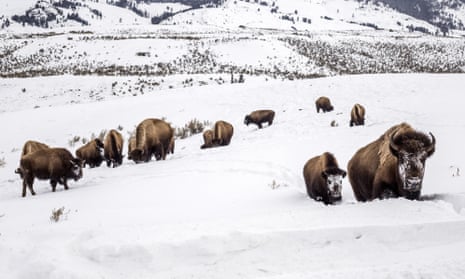Expanding national parks and protected areas will not be enough to halt the destruction of nature, warn leading scientists, who say urgent action on overconsumption, harmful subsidies and the climate crisis is also required to halt biodiversity loss.
Governments are expected to commit to a Paris-style agreement for nature at Cop15 in Kunming, China, later this year, with targets that include protecting at least 30% of the oceans and land by 2030.
An analysis of the draft UN Convention on Biological Diversity (CBD) agreement by more than 50 leading scientists has found that, while expanding protected areas will, if done well, help slow the destruction of the natural world, much more is needed to stop it.
Q&AWhat is the Cop 15 biodiversity conference?
Show
At Cop15 – the 15th conference of the parties to the UN convention on biological diversity – governments will negotiate new targets to protect biodiversity for this decade. The accord, “a Paris agreement for nature”, aims to slow rampant biodiversity loss around the world and is part of the UN’s overarching plan that humanity should be living in harmony with nature by 2050. The summit was originally due to take place in Kunming, China, in October 2020 but after several delays the first face-to-face meeting is scheduled for December 2022 in Montreal, Canada.
Why is it a big deal?
Time is running out to take action. An international group of scientists, including Prof Paul Ehrlich, author of The Population Bomb, warned in January 2021 that the planet is facing a “ghastly future of mass extinction, declining health and climate-disruption upheavals” that threaten human survival. The world has failed to meet a single target agreed a decade ago to stem the destruction of wildlife and life-sustaining ecosystems.
Are only governments worried?
No. At the 2021 World Economic Forum, business leaders said biodiversity loss was the third biggest existential, or long-term, threat to the world and was among the top five risks in terms of impact, alongside infectious diseases, climate action failure, weapons of mass destruction and natural resource crises.
What might the Kunming agreement look like?
In January 2021, the UN convention on biological diversity published a 21-point draft of the agreement. It commits signatories to protect at least 30% of the planet, control invasive species and reduce pollution from plastic waste and excess nutrients by 50%. Governments are yet to negotiate properly on the draft targets.
Prof Paul Leadley, an ecologist at Paris-Saclay University and co-author of the report, said: “The target of protecting 30% of all land and seas is important and attracting a lot of attention. And expanding protected areas is a good start if done well, but far short of what is needed to halt and reverse biodiversity loss – called ‘bending the curve’ for biodiversity.
“There is very good evidence that we will fail again to meet ambitious international biodiversity objectives if there’s too much focus on protected areas at the expense of other urgent actions addressing the threats to biodiversity.”
A “massive” reduction in harmful agricultural and fishing subsidies, holding global heating to 1.5C and tackling human overconsumption, including of meat, is necessary, the scientists said, as part of coordinated action across a diverse, interconnected set of “transformative” changes.
The 21 draft targets to be negotiated at Kunming include proposals to eliminate plastic pollution, reduce pesticide use by two-thirds and half the rate of invasive species introduction. The agreement aims to stop what some scientists have called the sixth mass extinction of life on Earth, driven by human behaviour, which threatens ecosystems vital to human civilisation.
The analysis of the proposed agreement, conducted by the scientific bodies BioDiscovery and the Group on Earth Observations Biodiversity Observation Network (Geo Bon), has been sent to governments, who will give their feedback later this month.
The assessment looked at the impact of three scenarios on halting and reversing biodiversity loss: business as usual, improved quality and quantity of conservation, and transformative change of society. It found that only the last scenario will have the desired effect, assuming global heating is limited to 1.5C.
“What we’re doing is trying to take the best science and explain why the global biodiversity framework looks like it does. A lot of countries are saying it’s so complicated. We’re trying to explain why you need all the pieces and how each piece fits together,” Leadley said.
The analysis comes after confusion over the breath and complexity of the draft agreement, which ranges from pollution to the inclusion of indigenous communities.
In March, governments are scheduled to hold in-person negotiations for the first time since February 2020, after several delays to the process. Governments have failed to meet a single target on halting the destruction of nature in the past decade.
María Cecilia Londoño Murcia, a researcher at the Humboldt Institute in Colombia and co-author of the analysis, said: “The sooner we act, the better. Time lags between action and positive outcomes for biodiversity can take decades, so we must act immediately and sustain our efforts if we are to reach the global goals by 2050.”
Find more age of extinction coverage here, and follow biodiversity reporters Phoebe Weston and Patrick Greenfield on Twitter for all the latest news and features
